One of the highlights of working in the V&A’s Technical Services department is the enormous scope of projects and variety of objects we work with on a daily basis at the museum. Since joining the team in 2012, it’s been a whirlwind of excitement altogether; from couriering incredible Baroque sculptures on loan to the Musée-du-Louvre-Lens for their first exhibition last year, to more recently installing 12th century objects from the Met Museum in Masterpieces of Chinese Painting, I can happily assure you that no two days are ever the same. But this?
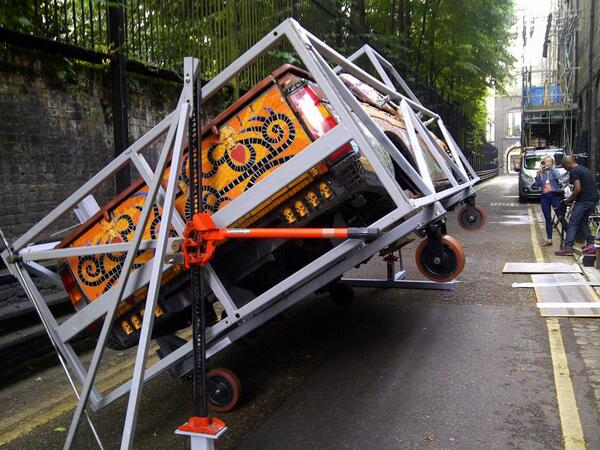
Well, let’s just say that installing a 1 tonne object into the museum before opening hours isn’t all in a days work!
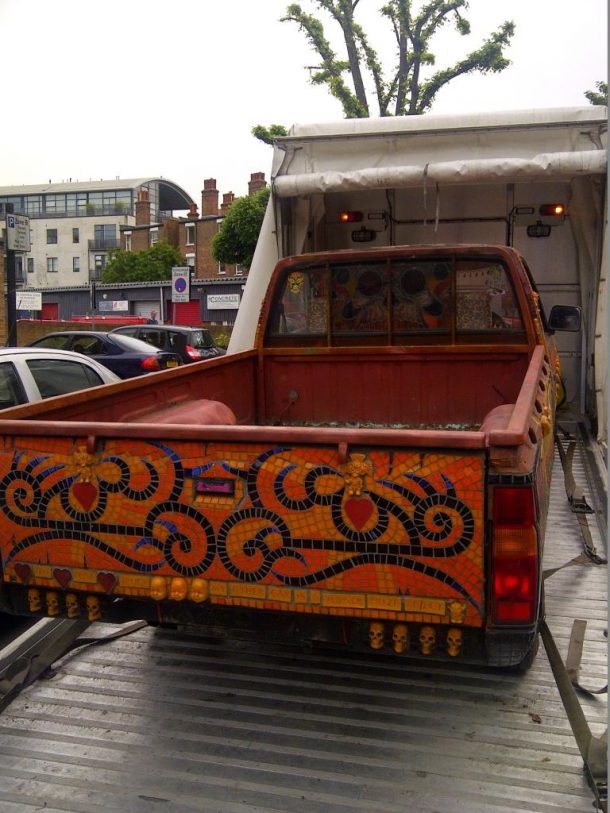
The first time I saw the Tiki Love Truck was at artist Carrie Reichardt’s West London house in July last year, with Disobedient Objects co-curator, Catherine Flood. Since then, myself and Sarah (Exhibitions Coordinator) have been carefully planning the best way to not only safely bring it into a museum that was built over a century ago, but to also find the best path through to the Porter Gallery that would create the least disruption en route to the collections that are on display. I approached conservator and engineer Tim Martin during these initial stages for advice, as he had worked on installing previous vehicles into our North Court space, for exhibitions such as Modernism and British Design. Now, Disobedient Objects actually takes place in our Porter Gallery space, and those familiar with the museum map who are reading this will now realise that this is on the other side of the building to where we have previously installed vehicles for those exhibitions. To throw another challenge into our midst, this would also mean bringing the Tiki Love Truck through the main museum shop. How is it that you bring a truck through a gift shop? We’ll get to that in a moment, but let me discuss the sheer volume of work that is involved in preparing for this. As we see in the first image, the truck had to be turned onto its side just to fit through the first set of the doors into the museum. We double checked every door measurement months in advance and by deciding to temporarily take off the truck’s wheels, we would be able to get through these doors with a mere 40mm to spare.
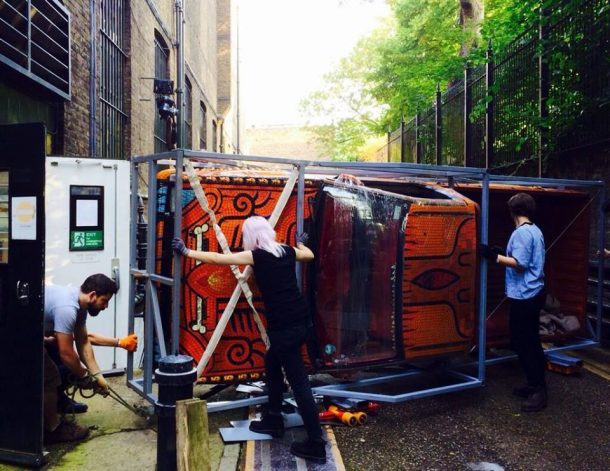
In addition to this, the engine would need to be removed to reduce its weight when anchoring it to the fabric of the building (I’ll discuss this in more detail shortly…) In order to turn the object 45° so we could manoeuvre it through the doors, Tim designed a steel frame skeleton that would wrap around the truck, which could then be lifted at either end by two additional triangular supports that sit on the ground. These would then connect and be powered by a cordless drill (yes, really!), which can gradually begin to tip the vehicle without it experiencing any sudden movements. Following an abundance of conversations last year with both the Estates and Conservation departments about what can feasibly work when moving an object of this size, Sarah and I did several walk-throughs of the route we decided would be the best option. With William Morris print tape measures to hand, we set about measuring every aspect of the route against the dimensions I had collected from my first site visit to the Tiki Love Truck. Following the initial move past the first set of doors that lead to the back of the museum, it would need to travel through our ground floor medieval and sculpture galleries in order to access the Porter gallery. Many of these objects on display are rather vulnerable, so we needed to ensure the best care possible when moving the truck through these spaces; the vibration caused could be potentially damaging, and because the floor of these museum spaces are decorated with ornate mosaic, we would need to work on spreading the weight load as much as possible with a series of plywood boards, which we would essentially ‘leapfrog’ onto with the truck as we passed through each space. Two works that we thought best to move were the 16c Christ Crowned With Thorns and Ambrogio’s 16c statuette of the Virgin and Child, so on the morning of the delivery of the Tiki Love Truck, fellow museum technician Allen lead on deinstalling (and later reinstalling) these from the gallery.
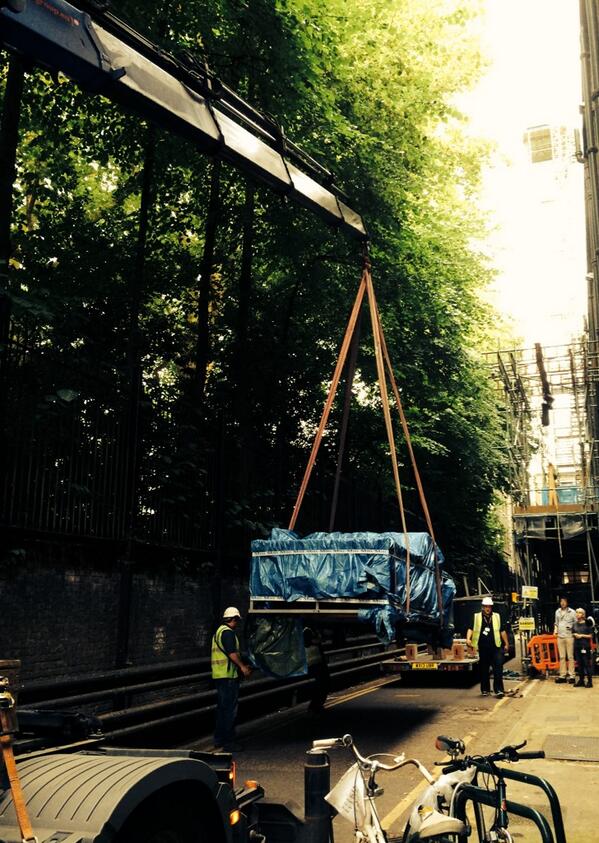
Because this would be such a large and challenging installation for the team, I decided to split the truck’s move through the museum into stages, as this was the safest option, as transporting the truck would be dangerous if the general public were around. This explains why we began so early on in the morning, as it was essential that all work was complete before 10am (the museum’s opening time) So, for the initial stage, we focused on navigating it through the doors and corridors and into a space that would be large enough to accommodate the truck without interfering with a main public thoroughfare.

A lot of care was taken into ensuring the truck wasn’t susceptible to any damage. The steel frame that Tim designed is lined with Plastazote, which is a conservation-grade padding that rested against its mosaic exterior. We also used this to wrap around the central columns in the museum gift shop, which was our primary focus for day two. We started even earlier the following day (6:15am!) as moving the truck through the museum shop was technically the most challenging part of the install. Like the previous gallery of European 14c- 17c sculpture, the galleries that lead up to the main entrance (Galleries 23 and 24) are also paved with decorative mosaic, so we continued ‘leapfrogging’ the truck over the plywood boards until we faced directly at the steps leading into the shop.
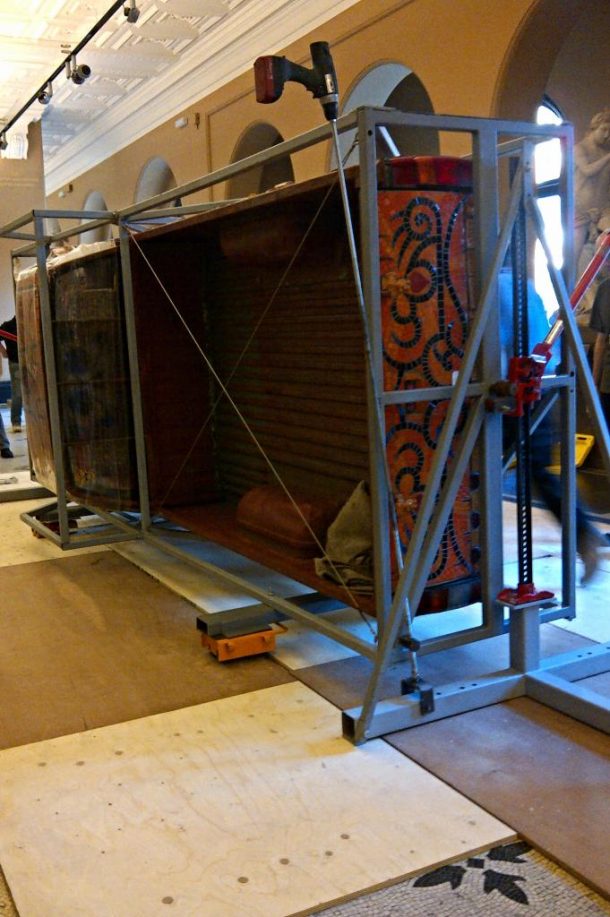
This would be the final point during the install where the truck would need to be on its side too, as it would help with both spreading the load, and pushing it into place later. Like before, Tim gathered the equipment and drill required and set to turning back onto its original orientation. The next stage was to carefully line up the bespoke aluminium ramps that Tim had constructed previously. These aligned against each individual step and once this was done, Tim and I began to prepare for the main winching through the gift shop. For those unaware, the winch is a device where there is a strong cable wrapped around a drum, which connects to a rod where you can essentially just lever the object into place. It’s a technique we sometimes use in our department for moving large and heavy objects on and off display at the museum. Moving back to the initial planning of all things Tiki Love Truck, we realised the truck’s weight would be a key obstacle in moving it through the gift shop. We considered various points in the shop that we could potentially ‘anchor’ off this weight, and came to the conclusion of using the 4 central columns that run down the length of the space next to the jewelry vitrines. Sarah approached a Structural Engineer, who ran several assessments of the shop’s structure, and determined that with the right support, we would only need two columns in the shop to safely accommodate the truck’s additional weight. Tim and I strapped (bespoke) steel rings around each column, and attached these to the winch with shackles and a series of heavy weight bearing strops (these were also lined with Plastazote to avoid any scratching of the stonework). Concurrently, Allen and the rest of the team were preparing the front of the frame that would be linked to the winch. With everything in place, every technician positioned themselves around the truck to act as a guide for the person operating the lever. Bringing the truck up over the ramp was hard (I must admit that by the time I’d winched it to the final step, my arm felt a little numb so I asked Allen to alternate turns with me). Once the truck was on a flat surface we could disassemble the shackles and winch as the weight requires no further support.
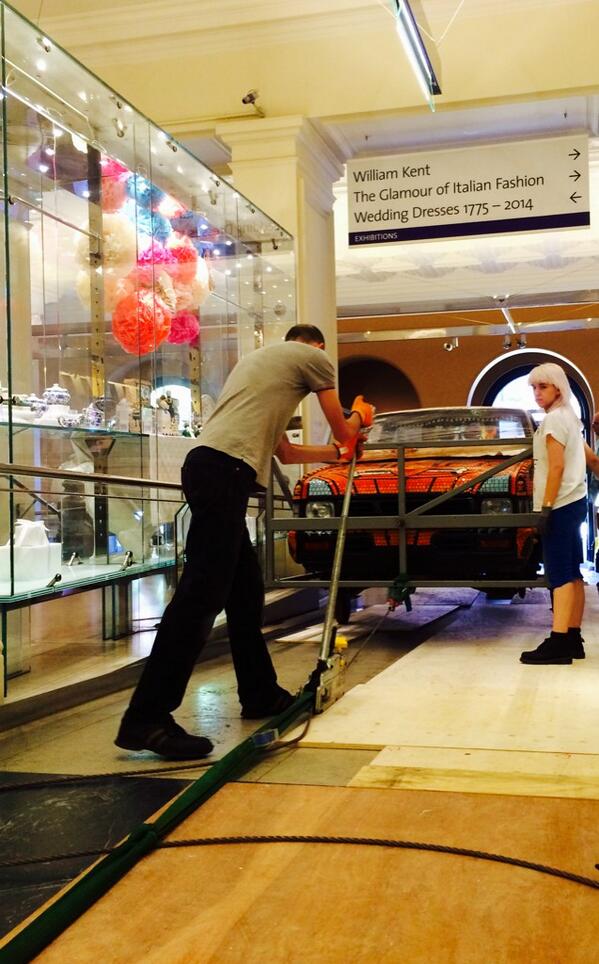
Now with the largest challenge quite literally behind us, all the team continued pushing the truck through the main entrance and up into the porter gallery. There was an overwhelming sense of team spirit here; with everyone from conservators to all the exhibitions team joining in to assist with the final placing of the floor-protecting plywood boards. At this point, our exhibition build contractor (Factory Settings) had already embarked upon the building of Disobedient Objects, but we had accounted for this in advance by carefully scheduling this so it wouldn’t interfere with any of the scaffolding poles/display cases that could block our route. After several hi-fives amongst the team once we were done, Tim showed me how to re-install the original wheels back onto the truck before we signed off its final positioning and broke for a well-deserved tea break!
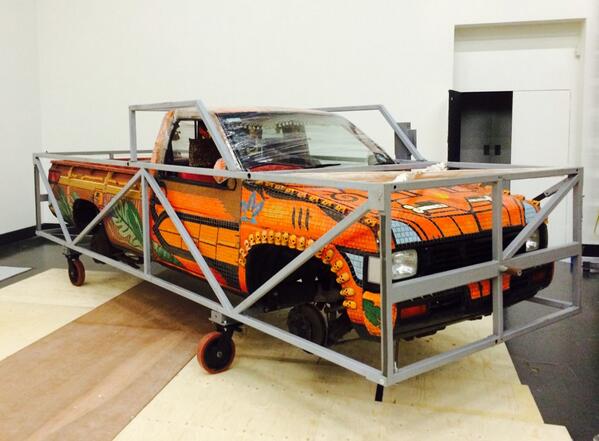



Thanks for sharing article